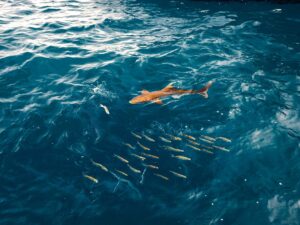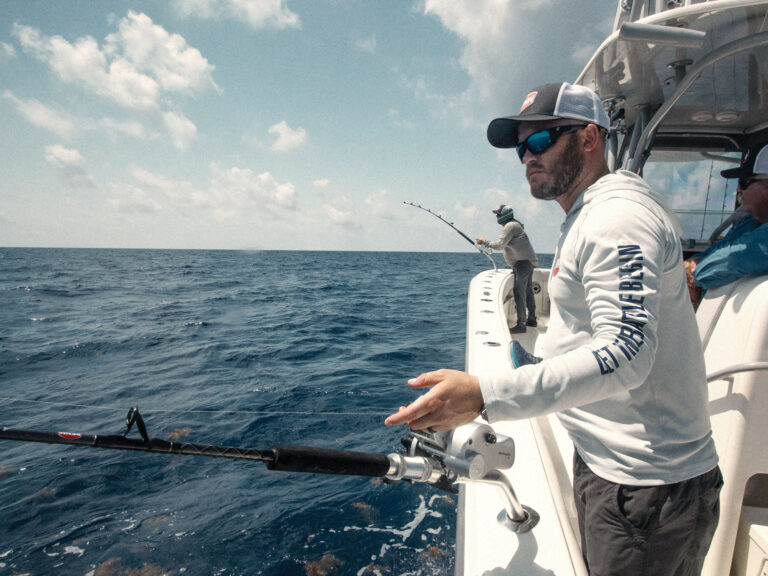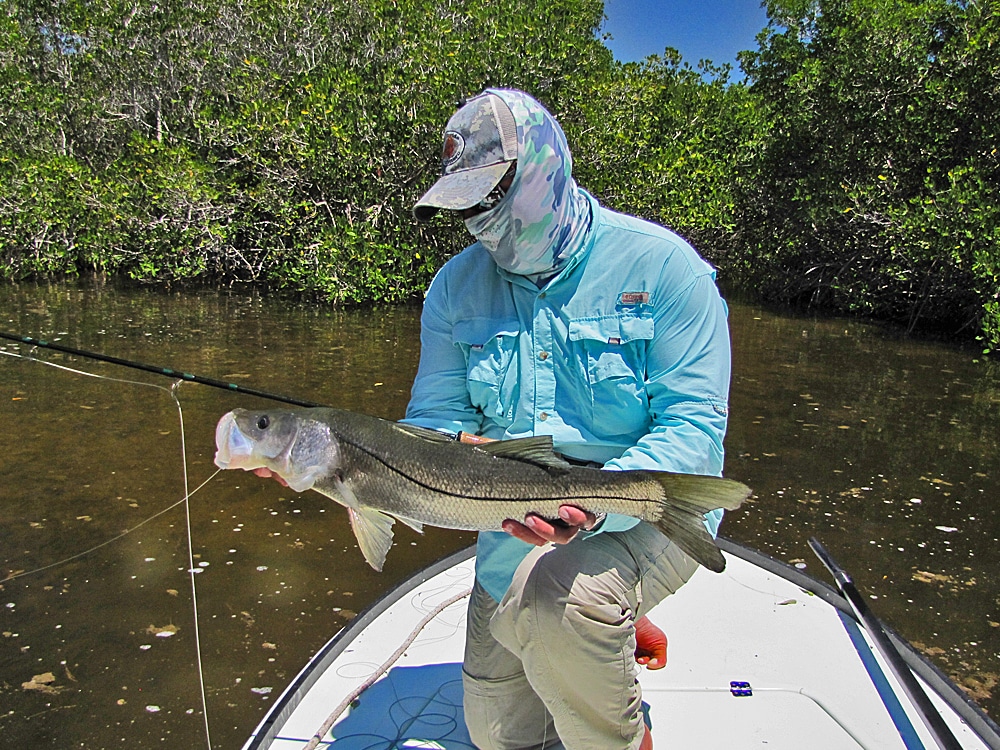
Who among us does not love the feel of casting a long line with a tight loop that turns our fly over gracefully 80 feet out? That requires skill that develops over time, but it also requires wide, open waters. Yet many fish hang out in narrow creeks nestled between high banks, small backcountry ponds with tall tree lines or overhanging brush, residential canals laden with docks and boats tied to them, or in the surf, along a stretch of beach where a high dune or a tall escarpment directly behind you leaves little room for a normal backcast. So learning to cast in close quarters is sure to boost your catches greatly.
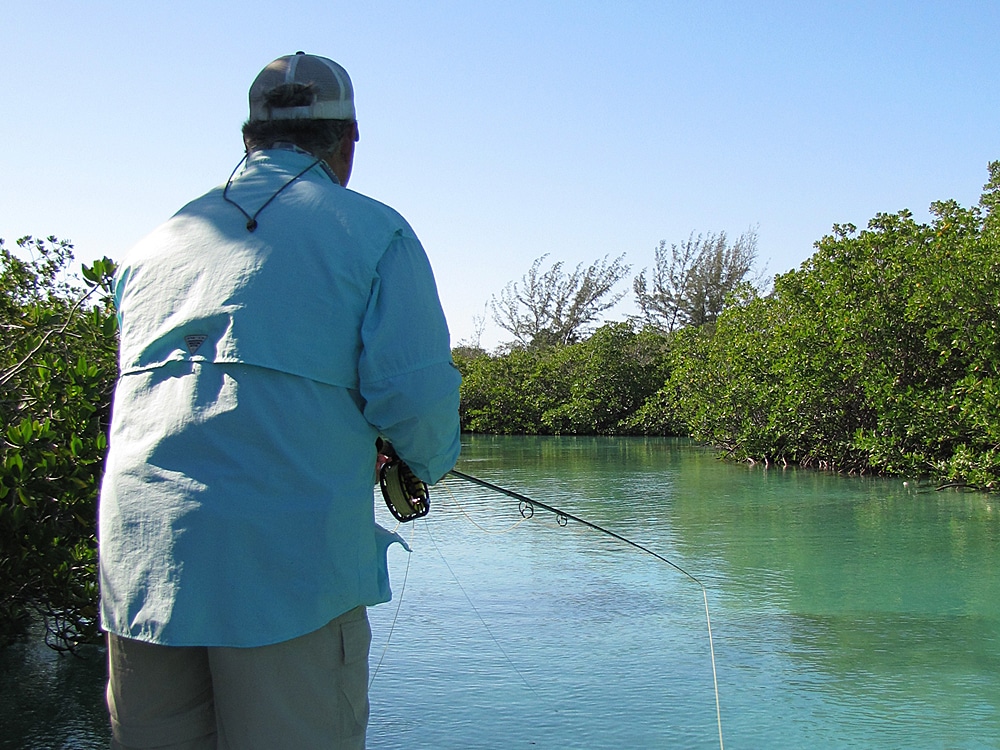
STEEPLE CAST
Learning to make a backcast that clears the obstacle behind you is in order. The Steeple cast, aptly named, produces a nearly vertical line path on the backcast. Traditionally this cast is made with the rod hand in standard position — thumb on top of the foregrip, opposite the caster’s body. However, many fly fishers (including myself) tweak this approach, and turn the rod hand so that the thumb is positioned 180 degrees from that position. In other words, the backcast becomes a forward cast to the rear at a high angle. It is superior to the standard backcast in that you can actually aim the fly and leader into any suitable breaks in the otherwise impeding backdrop. With my thumb in this position, I have more power and control backcasting at such a high trajectory. Then, as the line straightens on the backcast, you rotate your rod hand back 180 degrees to make the forward cast toward the target.
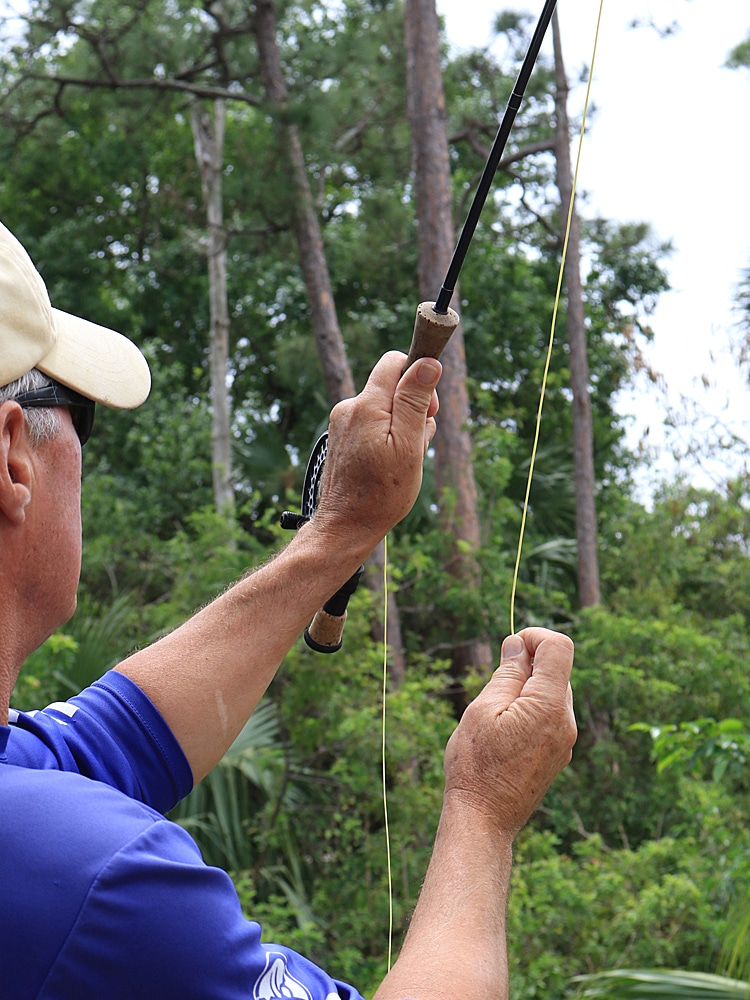
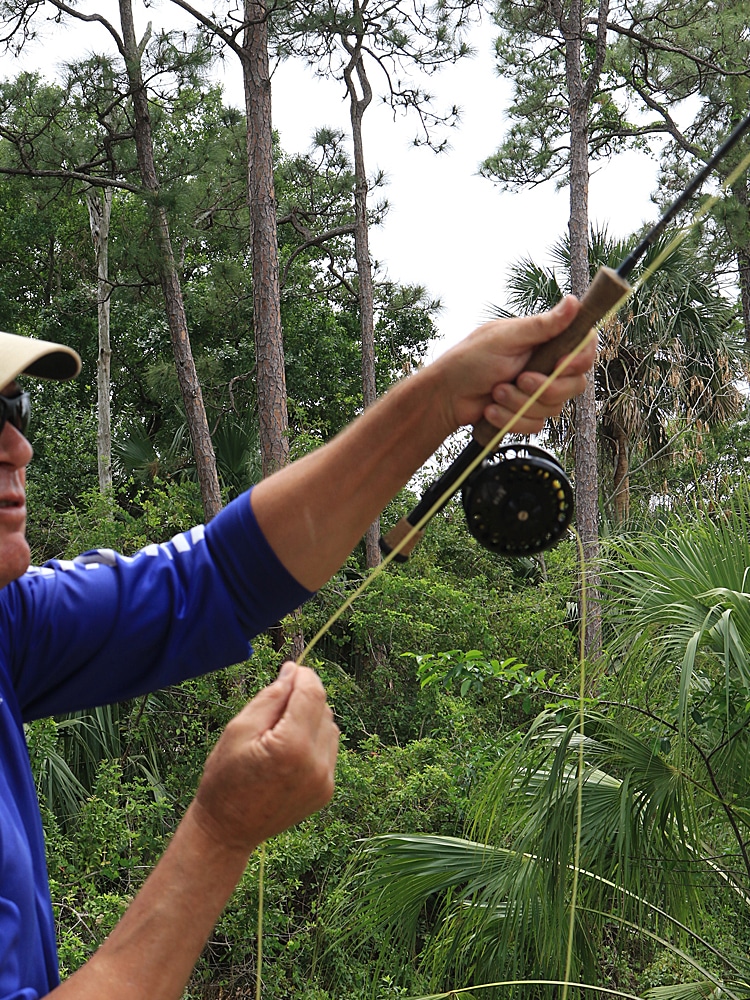
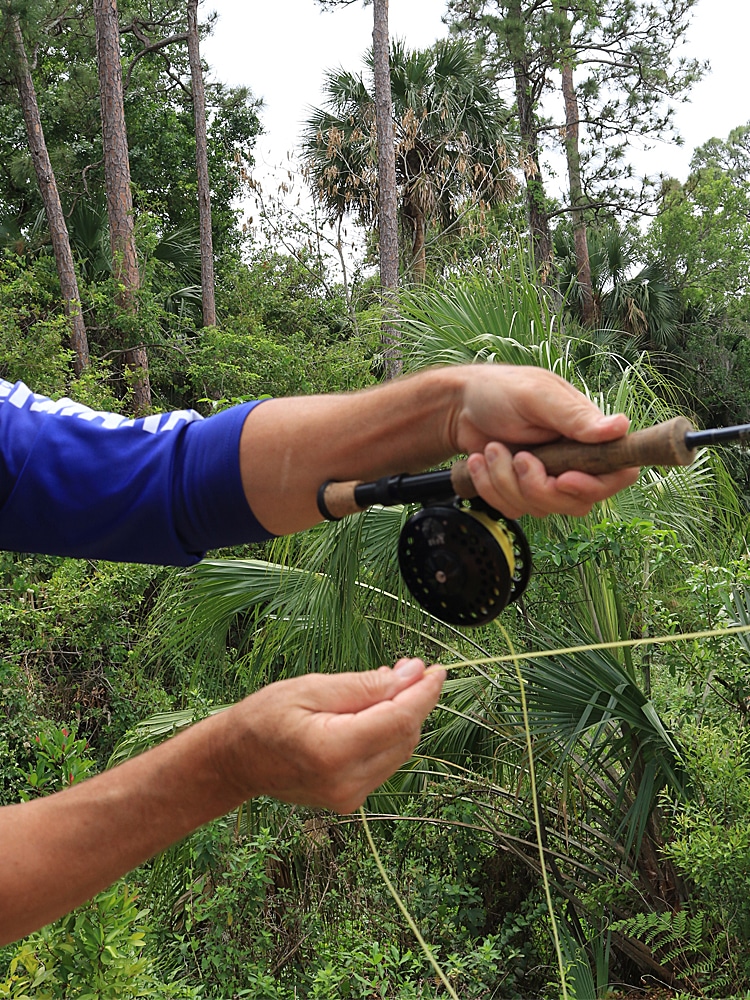
Whether you follow my suggested change or stick to the original casting procedure, stopping the rod sharply and tilting the thumb down as you stop on the forward cast is the key to making a good presentation. It causes the trajectory of the line and leader to be parallel with the water rather than straight down toward the surface, often crashing short of the target, and it also prevents a tailing loop, which more easily occurs when transitioning from a high backcast to a conventional forward casting plane.
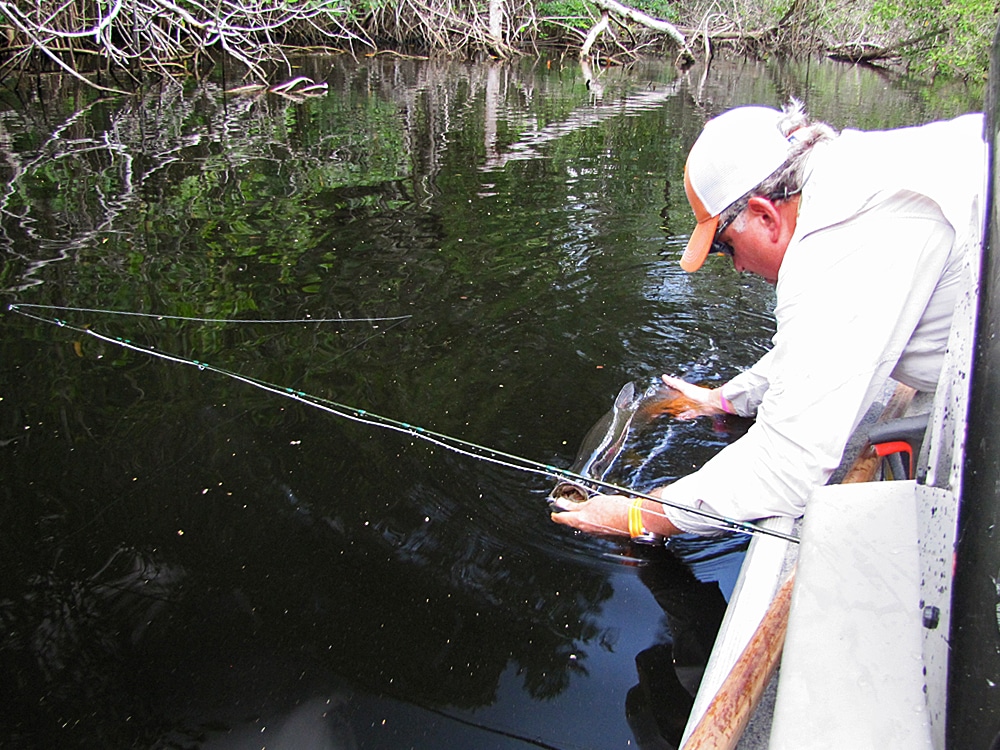
ROLL CAST
While most fly anglers resort to the roll cast to lift the fly and leader from the surface to recast a sinking line, the roll cast — if performed properly — also has a place in tight quarters, as it eliminates the need for a backcast. You should look at the roll cast as you would a conventional forward cast. By this, I mean that only the backcast is different.
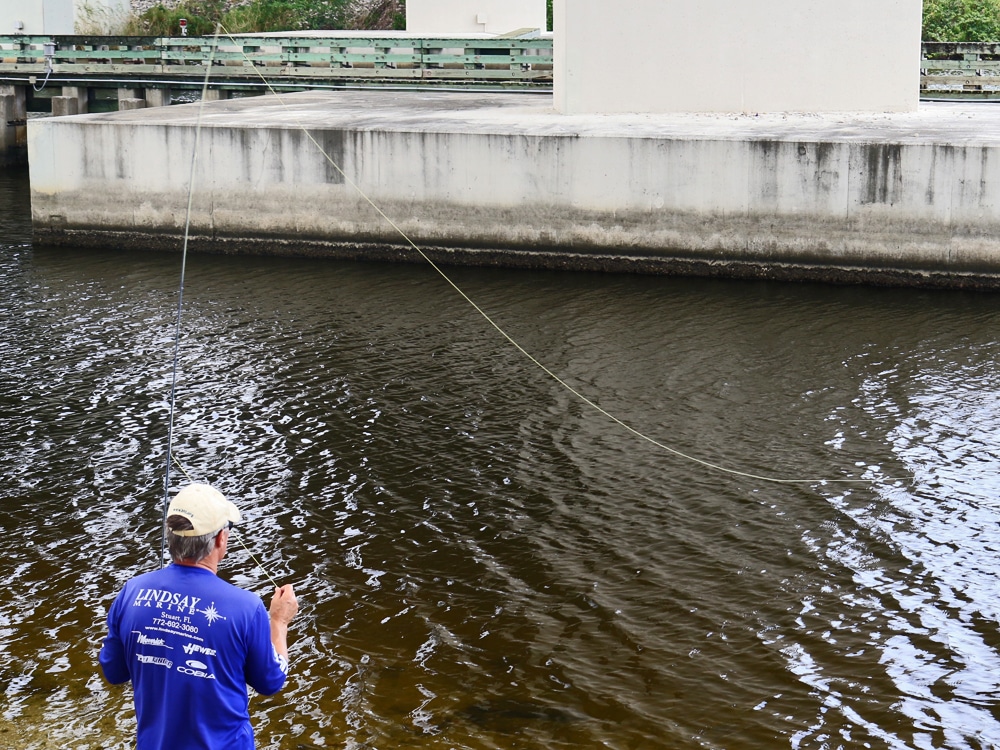
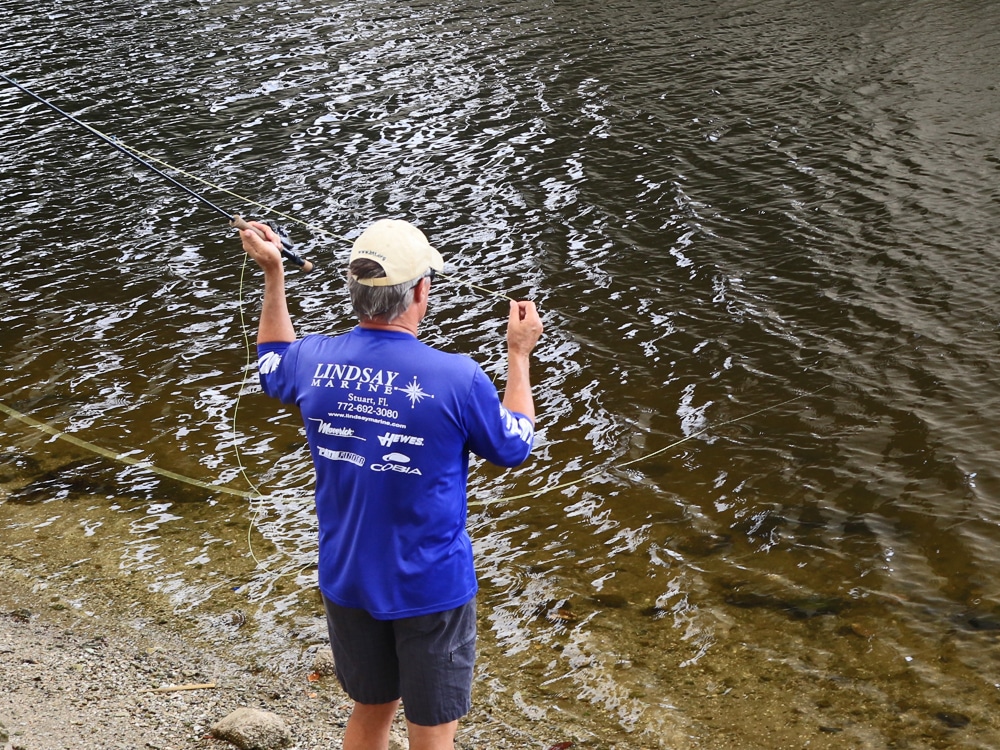
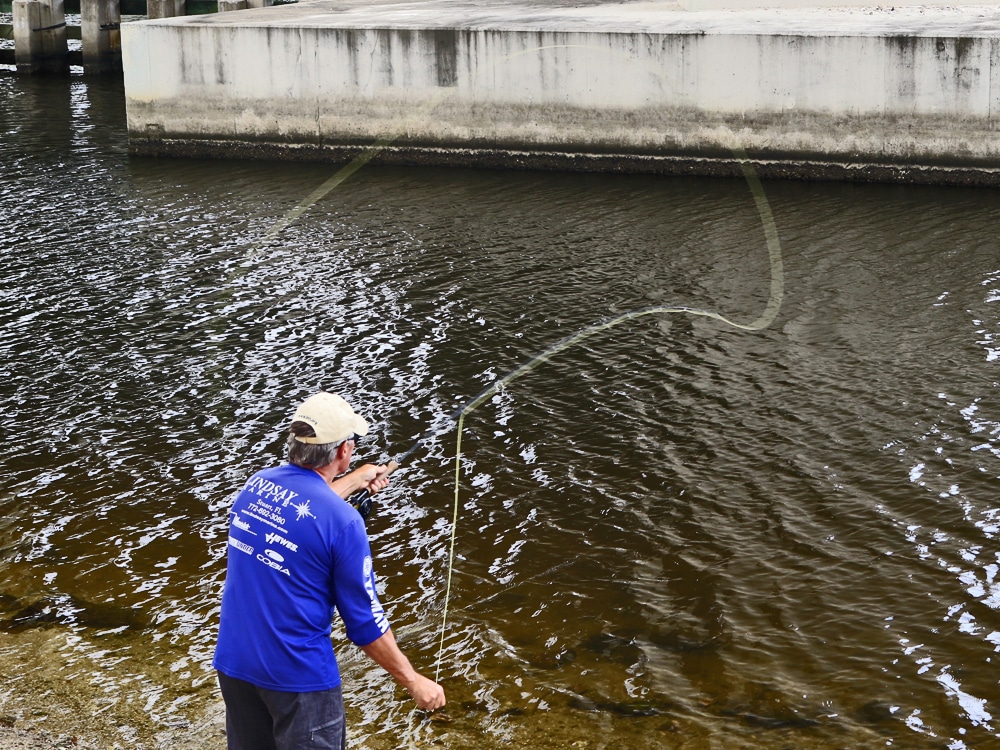
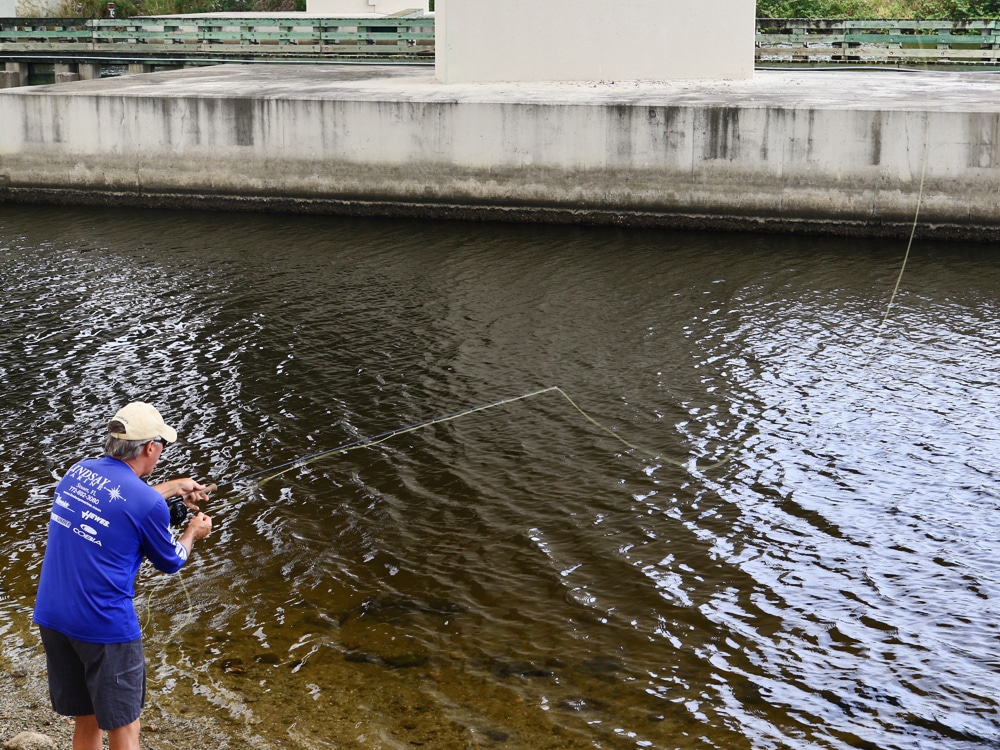
Start your line pickup with the rod tip just off the surface of the water. Slowly lift the rod (do not jerk it back) to get the line moving toward you. Rather than stopping the rod at the noon position, as commonly done, continue drawing the rod back to at least the 10 o’clock position, to get more out of the rod on the forward cast. The line will be sliding back toward you the entire time, but you must stop the rod at this point rather than pushing the rod forward as the line is still sliding on the surface. The water tension during the stop will help load you rod. After the line stops, make a standard forward cast stroke. Practice this, and you will quickly see that the motion for the roll cast is quite similar to that of the standard forward cast.
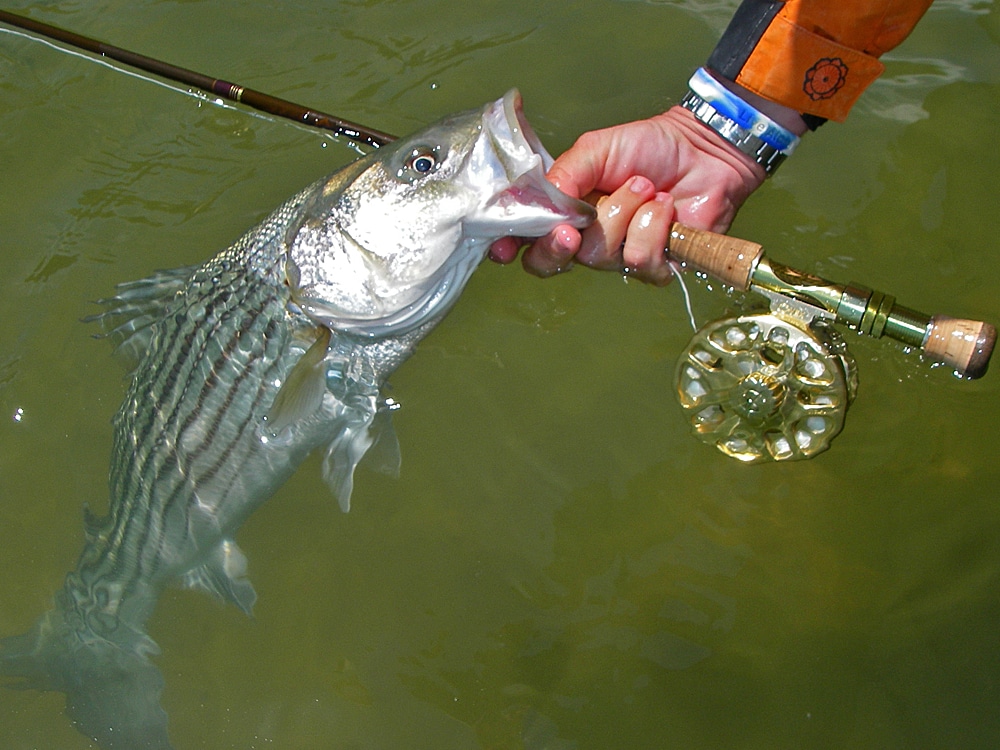
HAUL AWAY
Without a doubt, every saltwater fly fisher should master the double-haul. It is essential to achieving the necessary line speed and casting distance, but it also helps you deliver the fly when you can’t make a long backcast due to constricted space. If I have only 15 to 20 feet of clearance behind me, I make a quick conventional backcast and follow it with a sharp single haul on the forward cast to shoot sufficient line to reach my target. This, by the way, is easier to achieve by shortening your leader.
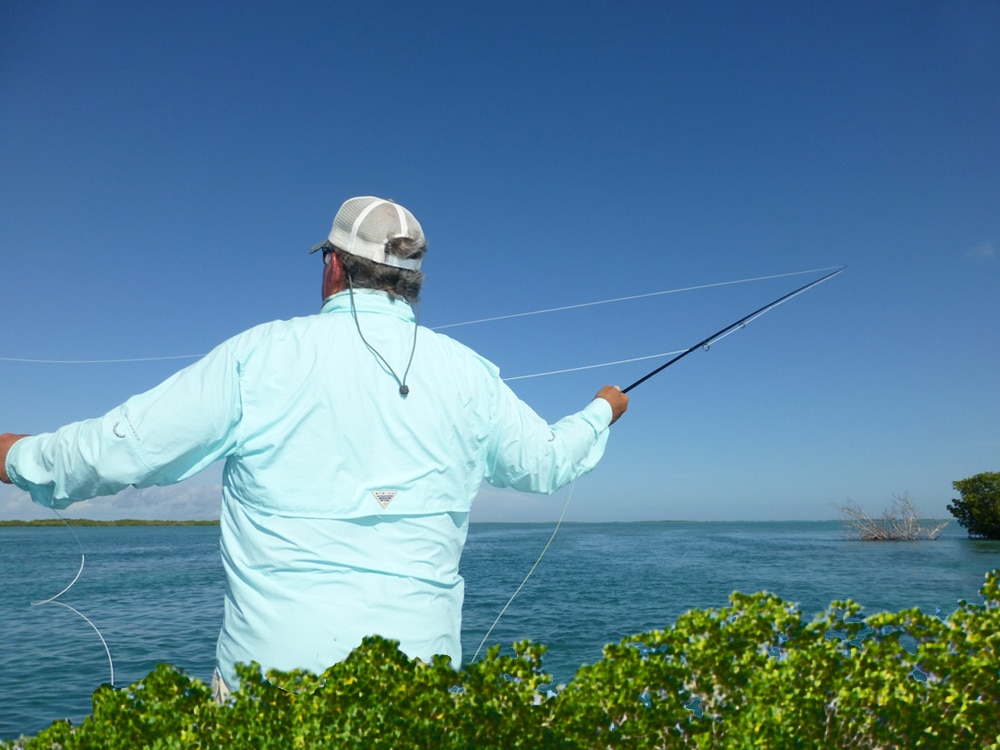
RODS AND LINES
Since casting in tight quarters normally calls for short tosses of 40 feet or less, with little backcast room, you should tailor your tackle. First, a short rod is a good idea. I fish an 8-footer, and occasionally break out my 7-foot, 6-inch rod. Both are rated for a 9-weight line, but can handle a 10-weight with ease when I’m not carrying a lot of line in the air.
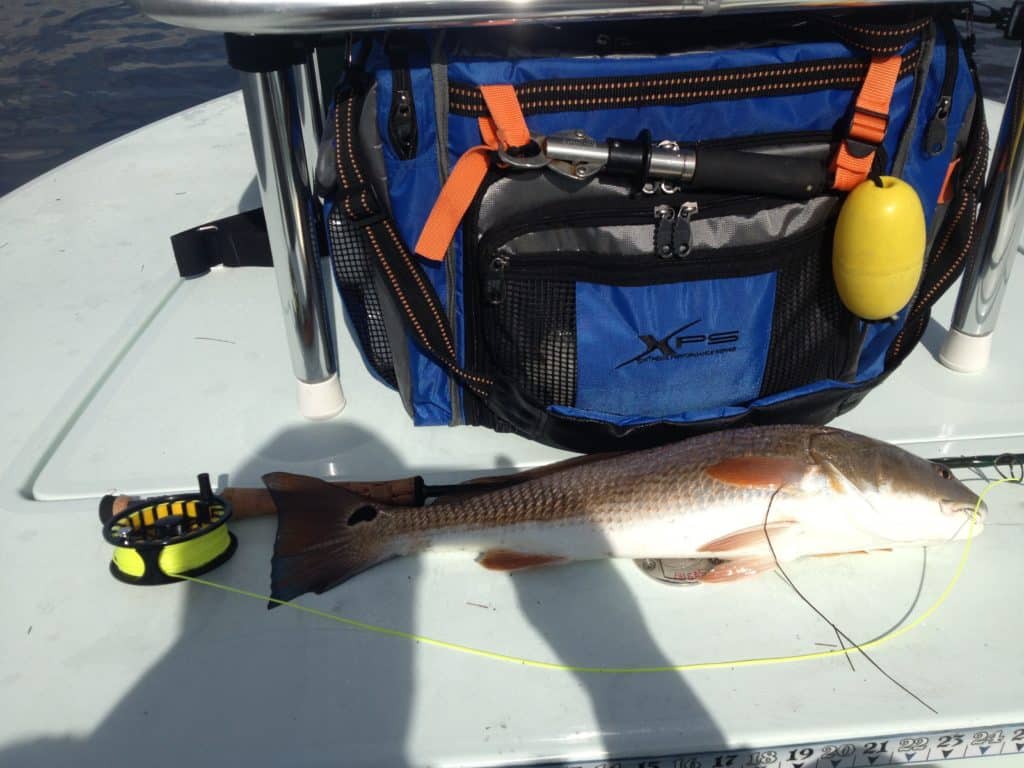
Another tip is to use a fly line with a shorter head (a Saltwater Taper or one of the specialty tapers available for quick, short casts) to load the rod with less line outside the tip. Lastly, consider shortening your leader a bit to turn the fly over on short casts. With less than 40 feet of fly line outside the rod tip, an 8-foot leader is considerably easier to turn over than a 10- or 12-footer.




